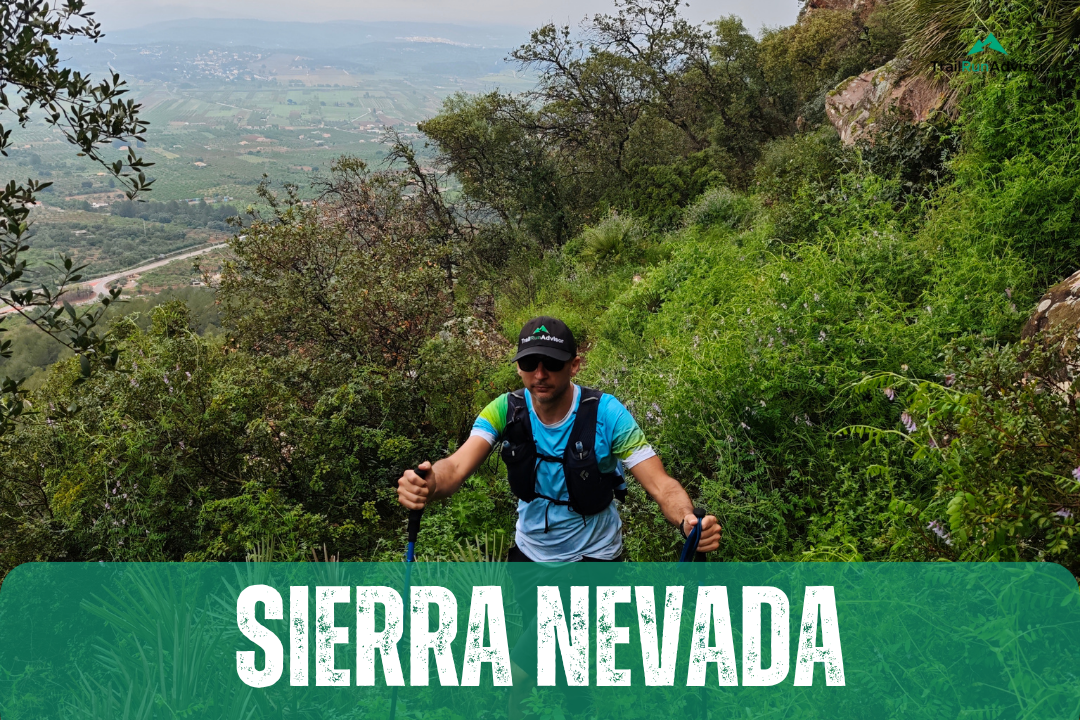
Sierra Nevada Off-Season: Let’s go back to basics
Sierra Nevada off-season running isn’t something most people think of when they plan their training year—but it should be. When I first signed up for a week-long, low-key running camp during the quietest time of year, I was honestly just trying to stay fit. What I didn’t expect was to reconnect with everything I had forgotten I loved about running.
Escaping the race routine
By the time October rolled around, I was burnt out. Although I had pushed through a busy race calendar, ticking off finish lines and personal bests, it all started to feel mechanical. So when a friend mentioned a rustic training camp in the Sierra Nevada off-season, I was intrigued. No bib numbers, no sponsor banners—just trails, altitude, and space to breathe.
As soon as I arrived, I noticed the silence. Unlike summer, when tourists crowd the peaks, the mountains felt deserted—in the best possible way. The cold air woke me up, the sky stretched endlessly overhead, and the first trail we hit was frozen solid. I could tell this wasn’t going to be about speed. It was going to be about depth.
A slower pace reveals deeper truths
Each day began without alarms. Instead, our guide would knock softly at our doors, and we’d shuffle to the kitchen where the coffee was already brewing. The vibe was more retreat than race prep. Because it was the Sierra Nevada off-season, we had the freedom to choose our own adventure: solo loops, partner runs, or group routes.
On day two, I opted for a solo climb up a ridge trail that wrapped around the east-facing slopes. Initially, I found myself pacing as if I were chasing a time goal. But something shifted. About halfway up, I stopped. There was no one in sight. Just wind, rock, and the deep blue of the sky. So I sat. No timer, no tracking—just presence. That pause did more for my legs and lungs than any tempo session could have.
Training without tech
One thing that stood out was how little tech people used. Many of us ditched our watches after the second day. No one cared about distance. Instead, we talked about how our bodies felt, what the terrain demanded, and what we noticed on the trail. In the Sierra Nevada off-season, the landscape teaches you to pay attention differently.
For example, one morning the fog was so thick we could barely see our feet. Instead of cancelling the run, we walked in silence up a narrow trail until we found a clearing. The view was surreal: layered valleys, birds soaring below, and pine trees dripping with dew. It was a masterclass in mindfulness—one no device could measure.
A camp stripped down to what matters
This wasn’t a luxury setup. The camp was a repurposed alpine lodge with stone walls, shared rooms, and no internet. Meals were simple: soups, lentils, fresh bread, and endless oranges from a nearby village. But somehow, that simplicity grounded us. Every evening, we stretched around the fire, traded stories, and watched the stars without artificial light.
Someone asked me one night, “What made you come here?” I said I wanted to train. But halfway through my answer, I stopped. Because the truth was more emotional than physical. I needed a break from performance. I needed space to run without goals. And the Sierra Nevada off-season had given me exactly that.
Learning from other runners
Another surprise? The depth of knowledge among participants. From a veteran ultrarunner recovering from burnout to a young climber exploring trail for the first time, everyone brought a piece of the puzzle. Without egos in the way, we exchanged gear tips, injury hacks, and nutrition ideas like old friends.
During one tough descent over shale and ice, I panicked. My foot had slipped twice, and I felt anxiety creeping in. A fellow runner slowed down beside me and calmly said, “Shorten your stride and use your arms.” It worked instantly. That kind of peer-to-peer coaching only happens in places where competition takes a back seat. The Sierra Nevada off-season had turned us into teammates.
Rediscovering recovery
Back home, I rarely give myself time to recover. Here, rest was baked into the rhythm. After morning runs, we had hours to stretch, journal, nap, or just walk around the woods. Some days, we didn’t run at all. And while that used to make me anxious, it became something I looked forward to.
One afternoon, I sat with a thermos of tea, watching snow melt off the branches. I realized I couldn’t remember the last time I had simply sat and done nothing without guilt. The Sierra Nevada off-season wasn’t just healing my legs—it was healing my mindset.
A storm that changed everything
Midweek, a snowstorm hit the peaks. Normally, that would cancel plans—but this place had taught us to adapt. Instead of a run, we built a fire, shared books, and took turns cooking dinner. It was one of my favorite nights. The conversation drifted from trail nutrition to life regrets, to future dreams, to the strange peace that comes when the world slows down.
Later, I journaled about how rare it is to feel both challenged and cared for on a physical journey. This wasn’t just a trip. It felt like a rite of passage.
Taking it all back home
On the final day, I did something I hadn’t done in years: I ran without a route. I left at dawn and took whichever turns felt right. I climbed until I couldn’t, then descended through old shepherd trails until the sun was high. My clothes were soaked, my fingers numb—but I felt free. And isn’t that the real reason we run?
Returning to my daily life hasn’t erased the noise entirely. The calendar is full, emails pile up, and pace goals sneak back in. But now, once a week, I leave my watch at home. I run until I want to stop. I listen. I pause. And I remember what the Sierra Nevada off-season taught me: that less is often more, and silence can be sacred.
Why I’d recommend it to anyone
If you’re a runner stuck in a loop—burning out, comparing yourself constantly, or just feeling like something’s missing—I’d gently push you toward the off-season. Not to stop running, but to change how you run.
Go somewhere quiet. Pick a trail with no spectators. Give yourself space to breathe. The Sierra Nevada off-season isn’t just a time of year. It’s a mindset. One that brings you back to your body, your surroundings, and your love for the sport.
Because in the end, speed fades. But the reasons you lace up—those should stay with you forever.

